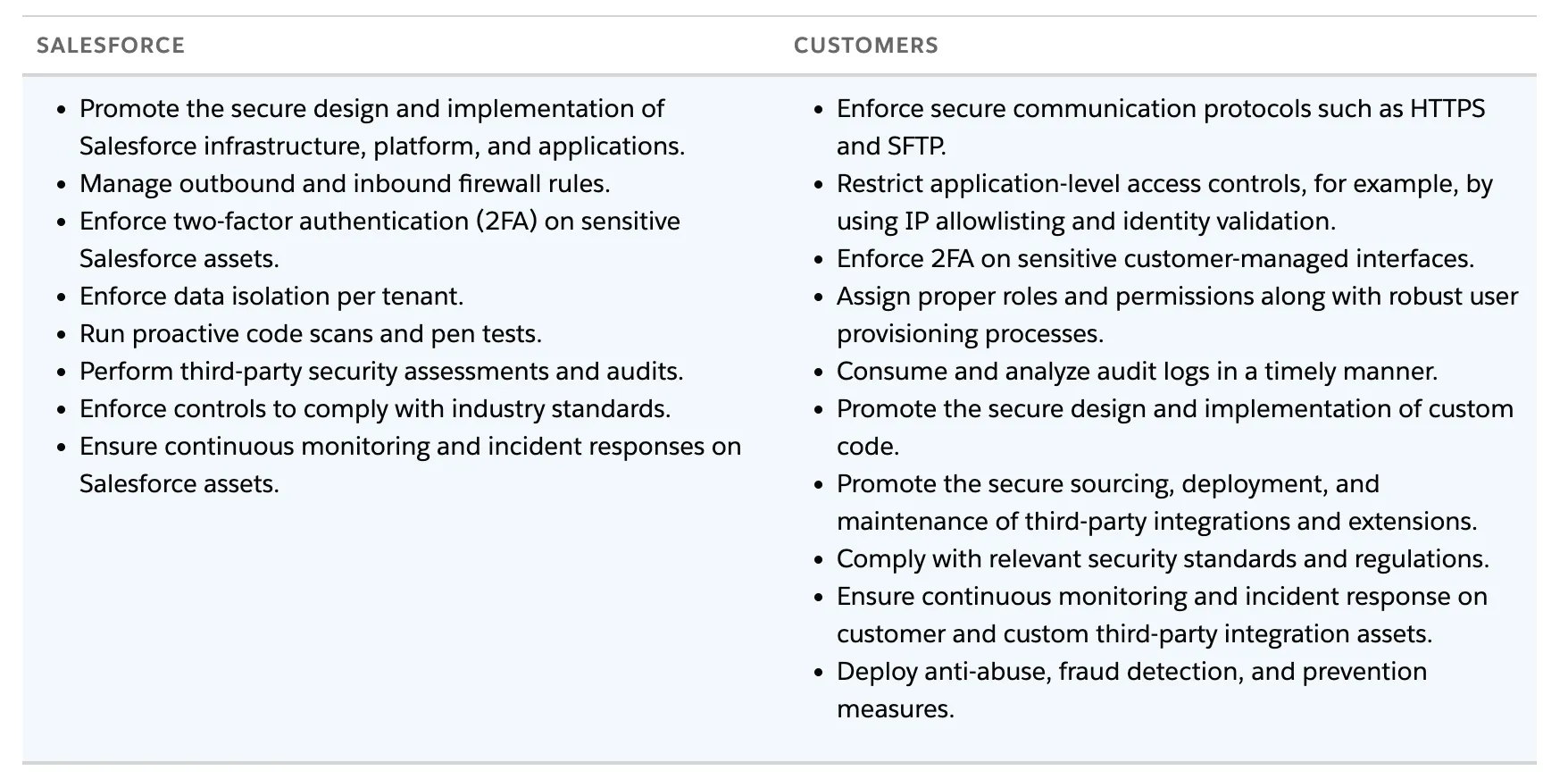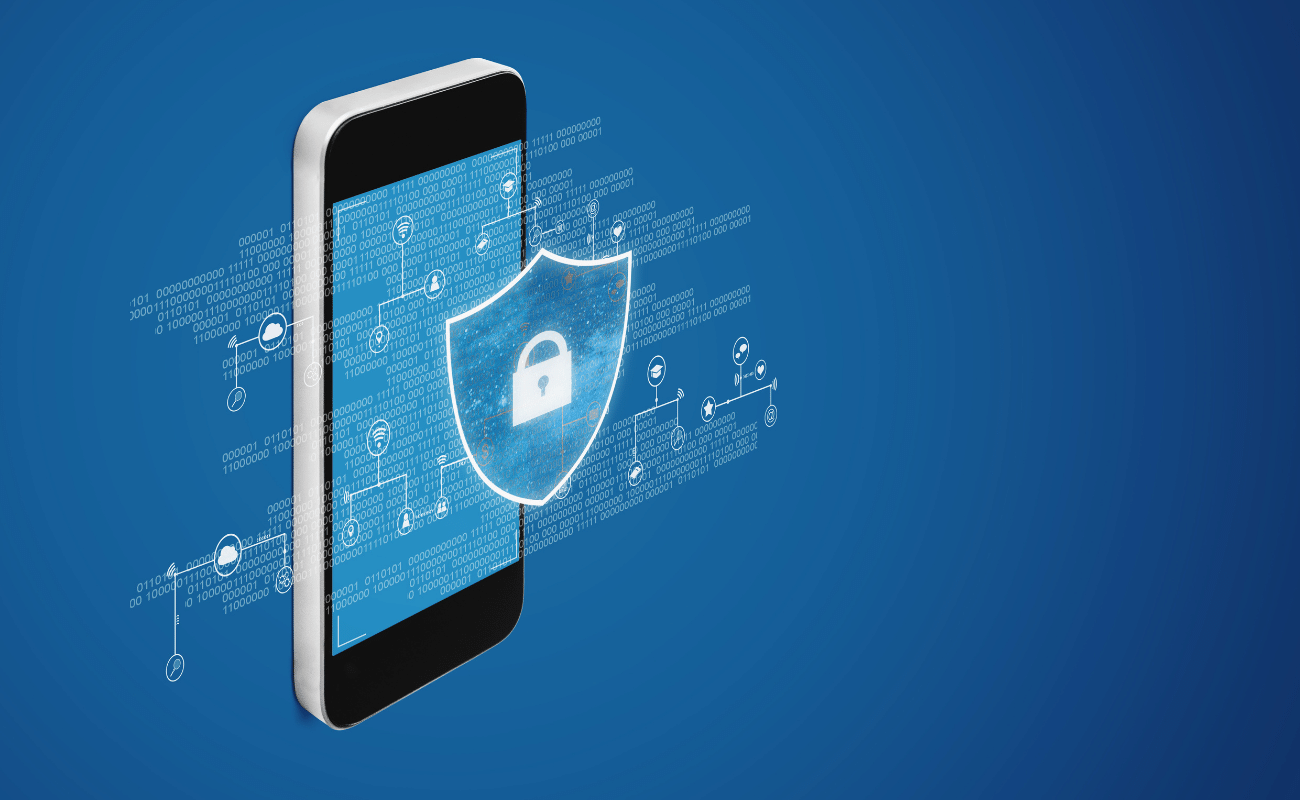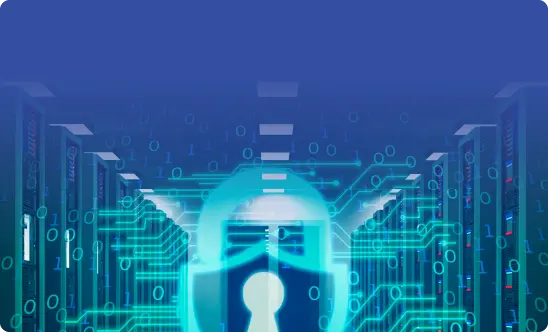Data Loss Prevention in Salesforce for Businesses
Salesforce is the CRM used by many organizations for their client-facing teams involved in revenue generation. It contains critical data about existing and potential customers and ongoing sales and marketing activities. Losing this information can significantly damage the organization’s ability to generate revenue.
In this article, we discuss data loss prevention in Salesforce. We review the main types of data in the CRM, the responsibility model, the reasons for data loss, and strategies to prevent it.
Responsibility for Data Loss in Salesforce
Understanding who is responsible for data loss in Salesforce is critical in the organization. Historically, cloud environments were associated with data backup storage. Additionally, vendors market these environments as secure. That’s why many companies continue to live in the paradigm that their cloud data is safe.
It’s partially true. Cloud providers utilize large data centers with enhanced protection against natural disasters and cyber-attacks. In fact, the last outage in Salesforce took place in 2019.
However, these types of incidents aren’t the only causes of data loss in Salesforce. In the next chapter, we’ll talk about the key causes of data loss in Salesforce. For now, it’s sufficient to say that most instances of cloud data loss are caused by the client, not the vendor.
For example, a salesperson accidentally deletes the contact information of a prospect. The CRM cannot understand that it is an error. It’s a program that is controlled by humans and it does as it’s commanded. Obviously, Salesforce doesn’t want to take responsibility for such incidents (and it shouldn’t).
Similar to many other cloud vendors, Salesforce has adopted a so-called shared responsibility model. This model stipulates the areas of responsibility for various security incidents.

This being said, even if Salesforce undertook responsibility for all security incidents, we would still recommend taking necessary actions to prevent data loss in the CRM. Learn about the importance of data security in Salesforce.
Understanding Salesforce Data and Environments
Before jumping into the discussion of data loss in Salesforce, let’s review the types of data in Salesforce and its environments. All the types are equally critical for revenue generation. And unfortunately, a company can easily lose any of them.
Salesforce has three types of data:
- Objects
These are records that contain data about your prospects/customers. A name, a company name, an email address, a telephone number, and the contents of conversations are all examples of Salesforce objects.
This is one of the most critical data for your revenue-generating team. It’s unique and often manually collected by sales teams from lead researchers to SDRs. Recovering this data can take months. And in some cases, it will be irrecoverable.
- Files
These are basically any files that pertain to your prospects/customers. It can be an agreement, project documentation, unique sales proposal, etc.
Some of these files can probably be found in other cloud environments that your company uses (e.g., in your sales rep’s mailbox, or in the legal department’s data repository). Still recovering them is time-consuming and can damage your reputation as mostly these are files that sales reps exchange with prospects.
- Metadata
Metadata explains how different types of objects correlate with each other. It represents your company’s unique sales pipeline and sales process. Regular users have no access to metadata. Only Salesforce developers can impact it.
The loss of metadata will make it impossible for your sales team to work in the CRM. They will no longer be able to open records, see what stage a certain prospect is on, or review the account-related data and files.
There are two types of environments in Salesforce:
- Organization
This is the environment where your sales team works and stores all the up-to-date data about potential and existing clients.
- Sandbox
This is the environment where your development team experiments before deploying changes to your organization. It can also be used by your sales team to train new sales reps and SDRs.
Causes of Data Loss in Salesforce CRM and Contributing Factors
There’s a plethora of scenarios for data loss in Salesforce. We can boil them down to three main types by the source of the incident.
Users
Users can intentionally or unintentionally delete information in Salesforce environments. For example, an SDR can accidentally delete the contact information of an important client.
Users can also edit some information making it unusable for other sales reps. For example, a sales rep can change the telephone number of a prospect before leaving. So that the next sales rep who takes their place cannot contact the prospect.
The impact that a single user can make on the Salesforce data might seem minor. However, for organizations that work in highly competitive niche markets with long sales cycles and a small total addressable market every potential client is critical. And a tiny mistake (or malicious act) can cost thousands of dollars in revenue for the company.
Developers
One of the biggest issues with the developers is their access to the metadata. Usually, a single user will impact just this one account. When metadata is lost, the ability to work with the accounts becomes hindered.
Applications
Third-party applications for Salesforce can help sales teams with analytics, outreach, training, etc. However, they bear hidden risks. Many of the SF apps have permissions that enable them to automatically edit the records and files stored in the CRM.
A glitch in such an app or a zero-day attack can wipe all the data that your sales team has generated over the year in mere minutes.
Hackers
Salesforce is prone to account hijacking just as any other cloud application. While this type of incident mostly causes data leakage, it can also result in data loss as hackers can be after your organization rather than your money.
The severity of the resulting data loss depends on the account that has been hacked.
Consequences of Data Loss
Data loss in Salesforce has serious consequences for your business. The data contained in the CRM is critical for the seamless operation of the revenue generation team. In this section, we quickly cover the main consequences of data loss.
Financial
There are several ways that Salesforce data loss impacts your company financially. First, it causes the downtime in revenue generation process. For example, a sales rep couldn’t send the agreement for the potential customer, and the deal closure was postponed. Learn more about the cost of downtime.
Second, you can expect the loss of clients. Amid the havoc caused by a major data loss incident, some prospects will fall through the cracks. In another scenario, the lack of communication can destroy a great upsell opportunity for your reps.
Third, if your company uses Salesforce for communication with existing customers, data loss can force some of them to leave your organization.
Finally, your organization will have to pay for the system recovery and data recovery, if you do not have a backup tool.
Reputational
Data loss can affect your communication with your potential and existing customers. In turn, it can significantly damage the reputation of your business. Unsatisfied clients can leave poor reviews on the ranking websites.
Finally, a major data loss can become known to the media and spread publicly further damaging your reputation.
Legal
Many organizations using Salesforce are subject to certain laws and regulations. Some of these rules regulate data retention. Therefore, data loss can cause legal penalties. Learn about GDPR compliance in Salesforce.
Strategies for Enhancing Data Loss Prevention in Salesforce
In this section, we discuss the strategies to combat data loss in Salesforce.
Control Access to Salesforce
One of the basic practices to prevent data loss is preventing account hijacks. There are three main recommendations here. First, you need to impose strong password policies, i.e., using a random set of letters, special signs, and numbers.
Second, you need to urge your employees to change their passwords. Make sure it’s not done too frequently, as your users will be overwhelmed and will try to come up with easy passwords so that they don’t forget them.
Third, enable Multifactor Authentication. It will force your users to use a second identity check method to get into the Salesforce environment, e.g., their phone.
Apply Zero-trust approach
The zero-trust approach is created specifically for the cloud environments, as they enable users to share data with each other easily. This approach mandates that you provide minimal access with minimal permissions to users.
For example, your sales reps only need to access the accounts they are currently working with. Your sales leader does need access to all the accounts to get a bird’s eye view of the current sales pipeline. However, they definitely do not need to be able to edit all of the accounts. The same is true for the organization’s top management.
Learn about Salesforce security best practices.
Get Salesforce Backup
While backup doesn’t prevent data loss from happening, it prevents the permanent deletion of your business-critical information. There are many backup tools for Salesforce available on the market. We recommend searching for a solution that meets the following criteria:
- Daily automated data snapshots
- Ability to manually back up data
- Backup for the metadata
- Storing data in a reliable data center (AWS, GCP, Azure)
- Ability to choose the location of where your data is stored
- Granular and mass recovery
- Sandbox backup
- Comparing functionality for data loss investigation
- Using two types of APIs for rapid recovery
FAQ
What are effective strategies to enhance data loss prevention in Salesforce?
The effective strategies to enhance data loss prevention are strengthening access protection, implementing a zero-trust approach, and acquiring a backup tool.
How can the financial and security impacts of data loss in Salesforce affect my organization?
The impact of Salesforce data loss can be detrimental to organizations since it can hinder the activities of the revenue-generating team, cause reputational losses, and legal implications.
What are the key factors contributing to data loss risks in Salesforce?
The key factors of data loss risks in Salesforce include human errors including developer errors and add-ons.
Why is understanding and implementing Data Loss Prevention (DLP) crucial in Salesforce?
Understanding and implementing DLP in Salesforce is crucial to safeguard your organization from downtime and reprimands from the potential and existing clients.
Was this helpful?
How Can You Maximize SaaS Security Benefits?
Let's get started with a live demo
Latest blog posts
Brewing Trouble: How a Starbucks Ransomware Attack Poured Cold Wate...
Cybercriminals often carry out attacks around holidays as this helps to ensure the most amount...
How to Recover Deleted Messages from Microsoft Teams
In modern-day hybrid and remote work environments, collaboration and communication tools like Microsoft Teams are...
Data Loss Prevention Techniques for 2025 and Beyond
It’s painstakingly clear that data loss is a major challenge facing businesses today. Our experts...


